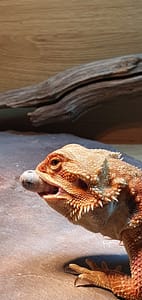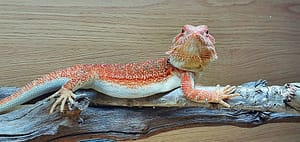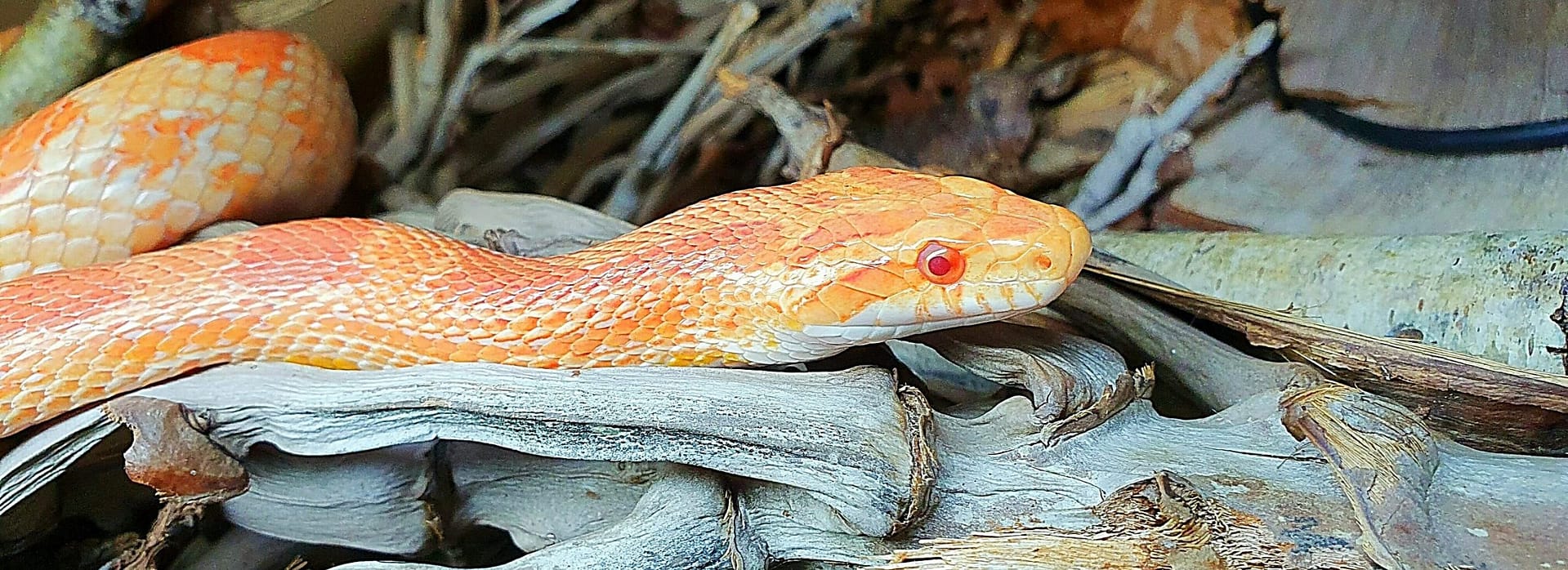It’s safe to say that feeding related issues are very much a common problem in the current age of Reptile keeping.
It’s all mostly related to these Reptiles being vastly overfed.
Obesity related health issues are prominent in Social media outlets, from respected Facebook groups promoting “as much as they’ll eat in 10 and 15 minutes” feeding regimes, to popular YouTubers giving out similar information – all without any data to state ‘Why’ it is these amounts are warranted.
These people are literally just regurgitating the ‘common information’ handed down to them.
So, why is this information wrong? – Okay, so wrong may be an incorrect word to use here, as these regimes have been used by millions for many years, right? Correct – but Reptile (and Amphibian) obesity IS an issue, and one I’d consider in ‘pandemic’ proportions.
From Bearded Dragons with huge chunky limbs and necks [1]. Yemen Chameleons with excess fat stored in the limbs and Casque [2]. Leopard Gecko with overly huge tails. Right to Horned Frogs the size of plates – yet only a few people even bat an eyelid and make an effort on advising these keepers and going over not only how much they feed, but what food they are offering also.
For many years now and certainly since my multiple publish peer reviewed article on ‘Bearded Dragon Obesity‘, I have battled the excessive 15-minute feeding rule. I suggested for many years the 5-minute rule for young of certain species only, and it’s good to see many similar Facebook groups to mine adopting this method.
My reasoning behind this was two things, and I’ll use the baby Central Bearded Dragon (Pogona vitticeps) for this example.
The number of bugs consumed in 15-minutes of feeding is crazy, an average of 30-50 per session. Twin this vast consumption with the advice that these feeds to take place 3x a day, every day until a year old. That is a HUGE amount of food consumed.
Also, alarmingly, the foods offered are often incorrect. Superworms (morios) offered as a ‘Staple feeders’ (I hate those words), when their 17% fat content makes them on par with us eating cake all the time. Only bad things will happen internally with long-term.
Even with my suggested 5-minute rule, the consumption can be excessive although obviously better overall.
This got me thinking and researching. I have contacted many people for data, from vets to breeders and long-term keepers, and also, and importantly, looking back and my own journals and written data over the past 30+ years from keeping and breeding reptiles (the majority being Bearded Dragons, Chameleons, Geckos and Snake).
I decided to test out the findings from my written work, and number crunch the figures. Along with field data by the likes of ‘The Beardie Vet‘ I had a new ‘feeding number’ range to aim for.
In the wild, Bearded Dragons, Chameleons, and Geckos for example, only consume a handful of bugs a week, and physically these specimens are lean, active, and healthy overall. They mostly have shorter life spans due to predation, illness, and not having Vets on hand to help with any ailments. So dietary shortfalls are in amounts eaten and variety are certainly not the issue.
This was the basis of my feeding experiments going forward.

My experiment – Many of you will know, I have a new Bearded Dragon named Willow. I got her at only 3 weeks old in October 2020 from a colleague. I needed a baby this young for my feeding experiments.
Looking back at my own information for dragons the same age (0 to 6 months), most of which I needed to decipher as I had no evident organization to what was written *LOL*. But repeated examples were as follows,
Greens fed daily-
Group 1 – 8x Bearded Dragons – average of 50 small/med crickets 2x a day
Group 2 – 10x Yemen Chameleons – average of 50 small/med crickets 2x a day
Group 3 – 10x Bearded Dragons – average of 50 small/med crickets 2x a day
Now before anyone states “not much variety going on here, you always bang on about variety!“, much of this was data from back in the 1990’s. The choice was very limited to what was available with no big-name Pet stores/shops around. Certainly not for the young me to access.
Also, variety was added to the feeding regime via wild-caught bugs, and later on when I was able to travel to get different feeder species, where the likes of crickets, earthworms, caterpillars, locust and mealworms are used throughout the 00’s, until a stable regime of at least 10 different ‘store purchased‘ feeder species, plus my added wild-caught range from around 2010 onwards.
But anyway, I digress….
One thing that sprang to mind here, I was offering around 50 insects 2x per day, but this was in total, not for each individual bearded dragon or chameleon.
So that means, around 50 insects between the group of 10x bearded dragons is an average of 5 crickets each sitting. So 10 each daily.
I guarantee you that dominant behaviour had a number of Dragons consume more than their clutch-mates leaving others with less, but the average ratio we can say is 10 insects per dragon – and being fed 2x a day, that’s 20 insects each. Likewise with the other species.
Now even back then, this was less consumed bugs than what is often advised now days,
Fast-forward to 2021 and Willow. I need to test my new devised feeding regimes and take weekly weight and note findings and adjust as needed.
My experiment continued – When I got Willow on the 11th of October 2020, she was just 16 grams in weight.
Her feeding routine was to be a small bowl of greens daily in the morning, 8 to 10 decent size varied bugs in the afternoon, just 1x a day. I have kept this regime due to the steady weight gain and optimal heath of Willow.
A few of example feeds that were given – all feeder insects were fully gutloaded as per my multiple published peer reviewed article, here.
- 2x Dubia, 2x Locust, 2x House Crickets, 2x Silkworms
- 10x Large Cali-worms, 2x Morio (Supers), 2x Black Crickets, 2x Domino Roach
- 2x balls of Arcadia InsectiGold, 1x Dendrobaena, 1x Pachnoda, 10x Dermestid larvae
Weight gains were as follows right up until last week (12th of March 2021);
| October 2020 | November 2020 | December 2020 | January 2021 | February 2021 | March 2021 |
| 11th – 16 grams | 1st – 35 grams | 6th – 72 grams | 4th – 112 grams | 7th – 165 grams | 5th – 220 grams |
| 17th – 21 grams | 8th – 41 grams | 13th – 80 grams | 11th – 120 grams | 14th – 188 grams | 12th – 228 grams |
| 25th – 29 grams | 15th – 50 grams | 21st – 90 grams | 19th – 135 grams | 21st – 200 grams | |
| 22nd – 55 grams | 28th – 101 grams | 26th – 146 grams | 28th – 212 grams | ||
| 29th – 62 grams | 31st – 152 grams |
These weight gains are actually very similar to those taken when I was feeding 50 crickets 2x a day to a clutch of 8-10 dragons. Just one round of feeding as opposed to two.
A couple of notable differences though that do influence my findings, results, and final conclusion.
- As already stated, variety was lacking on early documented records. So, feeder nutrition is vastly different.
- Poop – Individual dragons in previous clutches were pooping 2 or 3x a day according to my records – and this is widespread across other breeders provided information. Willow poops once daily for the most part – sometimes she’ll not go one day. So, she’s going at least 5x a week.
The poop is a big factor here. The small clutch of dragon was getting fed 2x a day with live-food, overall, more than Willow is getting now. This extra poop would mean that any extra food given is only really getting expelled as waste. I am sure nutritional content was taken from all eaten food; this is not my point. The point is, the extra food is simply not needed.
The same would certainly apply when feeding for 15mins 2/3 times a day. This will without doubt produce excess poop, and it will often be 2 or 3x a day. Or the flip side, due to the amounts consumed, becoming blocked up and not going for a short period and then producing something of disturbingly huge proportions 😉
Either way, they do not need these amounts of food, so the body is getting rid of its excess waste.
On a health benefit side of things – I have no conclusive data for blood tests from back in the day. Only vet check-ups and comments.
Willow has had 2x faecal tests and bloods taken due to being in quarantine, and these severed purposeful for this experiment, and all were very healthy levels. So, the reduced more natural feeding regime has had absolutely no negative effects, and her ‘steady’ weight gain is plain to see.
Incidentally – this regime of feeding will continue now she has reached the 6-month mark with a change, and 12-month marker another change. These are and will be as follows:
Small bowl of green daily
- 6 months onwards – 5-10 good sized varied feeders 5x a week.
- 12 months + – 5-10 good sized feeders 2x a week.
I may well feed slightly less per sitting depending on weight gains and feeders fed, hence the new 5 to 10 figure.

Quantity and quality – Probably the 2 most important words regarding Reptile and Amphibian diets – not the words ‘Staple, or Occasional” often quoted in nonsense care-sheets and feeding guides.
Do not get me wrong, there are good and bad feeders, and we should all have at least basic knowledge of a popular factual ‘Feeder Nutrition Chart’for information such as the fat content of our feeders.
I often bang on about how Morio worms (Supers) are roughly 17% fat, this is fact. So these are extremely poor health-wise when given in excess (only several a week needed).
Likewise, the nonsense about Dubia being 4x better than a cricket. Factually and nutritionally untrue. Feeding as many feeder bug species as you can get hold of will always be best practice (see my previous blog post, here).
The Size of the feeder given is also important – feeding 7 to 10 calci-worms or mealworms is not going to cut it I’m afraid.
Remember, the Rule about “No bigger than the gap between the eyes” is a good rule to follow. But please remember this is related to the width of live-food, not the length (greens don’t matter), so just be sensible.
Also note, these Reptiles do bite and chew food.
They are far less likely to get the far to common food impaction if the feeders given require them to be chewed up before swallowed.
Feeding a ton of tiny Dubia Roaches ‘could’ cause digestive issues as they do not get chewed up – ever seen whole bugs in your dragon poop? 😉
What YOU need to do – For peace of mind, you should always be taking regular weight of your animals regardless of any diet change, more so under 1 year old, as this is when the ‘rapid growth’ happens it should be done at least weekly.
Weight gain should be steady, and roughly stop at around 12-18 months of age, with only minor fluctuations up & down from then on in.
Any major and rapid weight loss could mean illness, and I 100% recommend Vet assistance. Certainly, don’t go onto Social media and ask for the best way to “fatten up my reptile” – Rapid fat intake = organ stress and related issues.
Conclusion – So does this all constitute as good quality data?, of course it does. These are results and experiment duplicated by not only two individuals, but data over the years of my own does’ back-up these results. So it is absolutely a good basis for others to work from in a proven safe controlled way.
I’m not going to preach about how you ALL need to change things immediately but know my Facebook groups WILL be suggesting this information based on the successful results seen.
We are overfeeding our captive Reptiles and Amphibians – this is plain to see on any social media platform, even though most keepers are to proud to admit this. I’ve certainly overfed animal in the past, 100% know I have, so I’m not excluding myself at all.
These Animals thrive in wild conditions with mostly only a handful of food a week. It’s what they have evolved to thrive on nutritionally. A few decades of captive breeding will not change this evolutionary need. Only keepers thinking too much from the domesticated pet Dog and Cat standpoint, where they are being fed 2x a day.
– Pete
Resources:
[1] Bearded Dragon Obesity – https://reptilenetworks.co.uk/bfd_download/55/
[2] Chameleon Obesity –https://chameleonacademy.com/chameleon-medical-obesity/
[3] Feeder Nutrition/Cricket debate – https://reptilenetworks.co.uk/2019/08/25/the-big-cricket-debate/
Award winning Published author of Herpetoculture.
Featuring articles on many species within,
Practical Reptile Keeping magazine (some linked on site as .pdf files)
Canadian Hobbyist magazine
Reptiles magazine
Also, Reptile/Amphibian blog article writer and reptile specialist for;
Exotic Direct (links on this site)
Reptile Apartment
Public talker at Reptile meetings, for various organisations.
Founder of several huge Reptile and Amphibian related Facebook groups (links on this site)
Reptile Reports – “Lizard Personality of the year” 2016 & 2017

